To celebrate Seed Savers Exchange's 50th anniversary, we are featuring the work and inspiration of Exchange listers in the "Hope and Practice" series.
Hope and Practice: Robert Lobitz
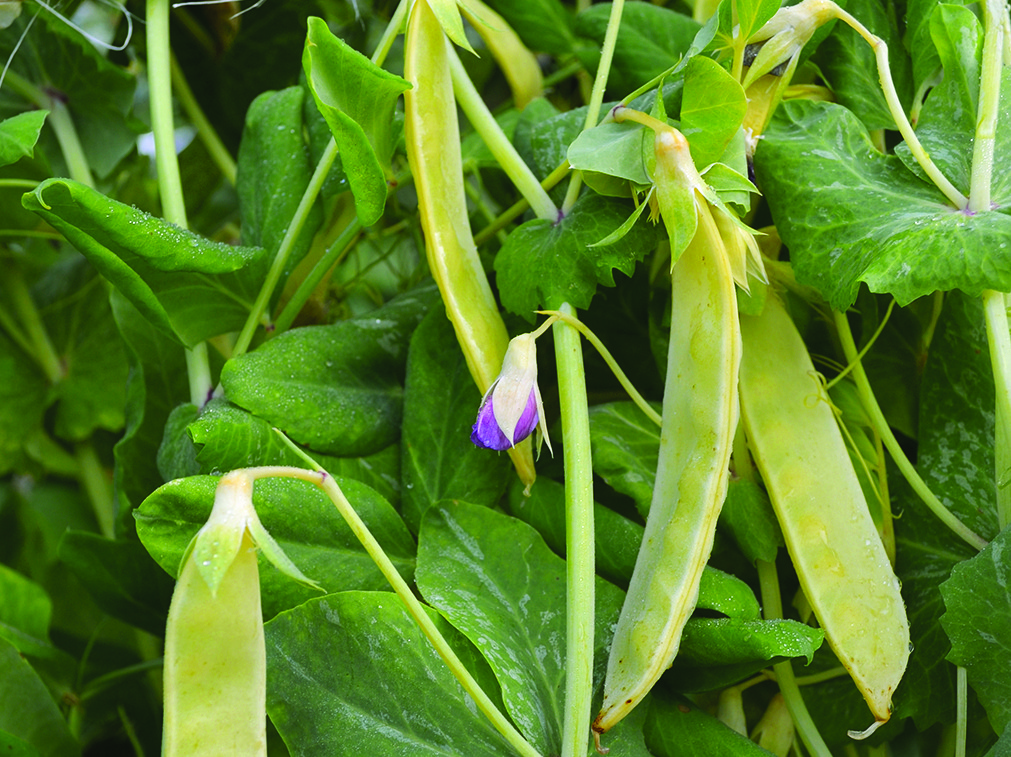
‘A labor of love’
The late Robert Lobitz made a lasting contribution to seed diversity by collecting, breeding, saving, and sharing heirloom seeds. Here longtime Exchange lister Jim Tjepkema shares insight into Robert’s seed-saving and seed-sharing passions.
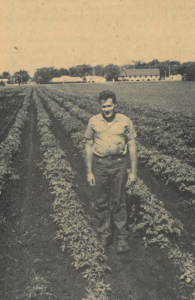
Robert Lobitz—once one of the most active members of Seed Savers Exchange—had many listings in the Yearbook from 1984 up to 2006, when he passed away. Some of his listings were heirlooms; others were varieties he developed through his own efforts; and still others were from his grow outs of seeds he obtained from the United States Department of Agriculture (USDA) collection. He discovered the ‘Golden Sweet’ snow pea, for example, buried in the USDA collection and proceeded to grow it out. This pea, which bears brilliantly colored pods and flowers, is now being offered by many seed companies, as are some of the varieties from his breeding program, including the ‘Red Swan’ snap bean.
Robert described himself as a truck farmer who raised and sold vegetables with his father on their farm in Paynesville, Minnesota, where he grew up. He was not a commercial seed breeder or a commercial producer of seeds. His very extensive work with seeds was a “labor of love” done as a private individual all on his own. Much of what I know about him came from correspondence during seed exchanges with him; an interview by Kent Whealy, SSE co-founder, first published in 1982 and also included in the 1986 booklet that recapped the first 10 years of Seed Savers Exchange; and an article written by Tim King published in 1994 in The Land magazine. Mike Dunton, founder of Victory Seeds, also included Robert’s obituary in his online “Seedsmen Hall of Fame” as part of his efforts to document the work of well-known people involved in seed breeding and development. The online entry lists some of the most notable seeds Robert made available to the public, including eight beans, two soybeans, and a potato.
The articles by Kent Whealy and Tim King cover Robert’s work with potatoes in the 1980s and early 1990s. During this time, he maintained at least 300 kinds of potatoes that he had obtained from various sources, including other seed savers, seed companies, and the USDA collection. Some were rare ones that he thought were in danger of being lost. Kent reported that Robert sent 54 potato varieties to him for a program that SSE was putting in place to preserve seeds. I expect that some (or perhaps even all) of those varieties are now in the collection at Heritage Farm.
Details on Robert’s potato-breeding methods are found in Kent’s and Tim’s articles. Robert did much of his variety development by collecting and growing out seed from flowering potato plants; he selected and named the best of the plants grown from the seed. ‘Cranberry Red,’ also known as ‘All Red,’ is one outstanding variety he developed that is currently commercially available. Some of Robert’s other varieties were picked up by a seed company that is no longer operating; it is unknown if these varieties are still being sold by any other seed company.
By the early 1990s, Robert no longer offered any potatoes in his SSE seed listings and instead began offering a large number of beans, including many that were new varieties from his own breeding program. He reported, in a comment included with one of his listings, that bees cross pollinated bean plants for him. Beans are self-fertilizing and do not cross pollinate; plant breeders cross pollinate them by hand to develop new varieties. However, bees will sometimes break into bean flowers that haven’t yet opened and pick up some pollen which they will spread to other bean flowers that haven’t yet opened. Robert looked for beans that came from crosses made by bees, grew out this seed, selected the best beans from these grow outs, named them, and offered them to the public.
According to the aforementioned published stories, as well as comments in Robert himself included in his SSE listings, he screened for many factors when making selections. He looked for resistance to disease and insect pests, drought resistance, and a number of other characteristics. In potatoes, he sought ones that stored well, as he said that many potatoes offered commercially do not store well or have the long-storage characteristics that would be desirable for home gardeners growing food for their families. Among Robert’s varieties are many that are highly colored, indicating that attractive color was also among the factors he considered when making selections. And, of course, he looked for good flavor in his screening process.
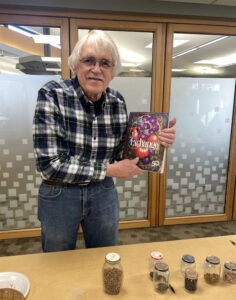
Robert is no longer with us, but a great many of the seeds from his collections and breeding programs are still found in the SSE Yearbook and on the online Exchange. Some SSE listers have made a concerted effort to collect various seeds that were offered by Robert and make them available to others through the Exchange and Yearbook. Apart from beans and potatoes, he also had a large collection of soybeans, some of which can be found in the Yearbook, along with a number of other offerings of various vegetables and grains.
(In 2025, the Exchange shows listings for 87 varieties traced to Robert Lobitz.)
Jim Tjepkema of Minneapolis has listed seeds in the Yearbook/on the Exchange for more than 40 years. In 2025, he is listing 38 varieties.
Try one of Robert’s varieties!
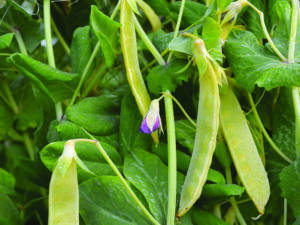
Tall, 6′ plants bear beautiful, bicolored purple flowers and bright lemon-yellow pods that make an excellent addition to stir-fries.
Try one of Jim’s varieties!
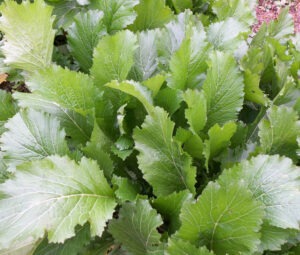
This heirloom variety’s leaves have the classic spice and sharpness of a standout mustard green.